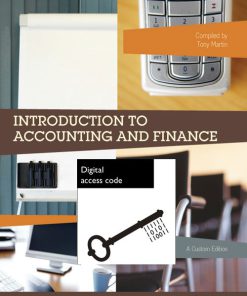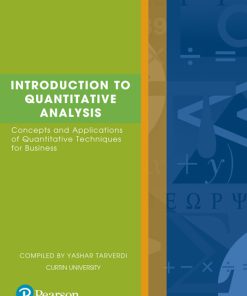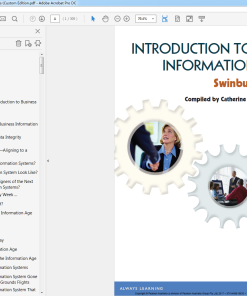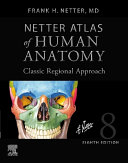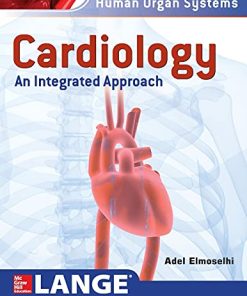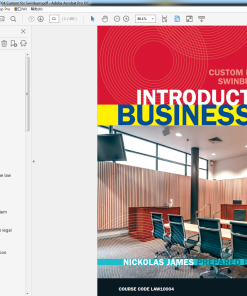(eBook PDF) (AUCM) Introduction to Accounting ACCT1000 Custom
$50.00 Original price was: $50.00.$35.00Current price is: $35.00.
(eBook PDF) (AUCM) Introduction to Accounting ACCT1000 Custom – Instant Download
(eBook PDF) (AUCM) Introduction to Accounting ACCT1000 Custom – Digital Ebook – Instant Delivery Download
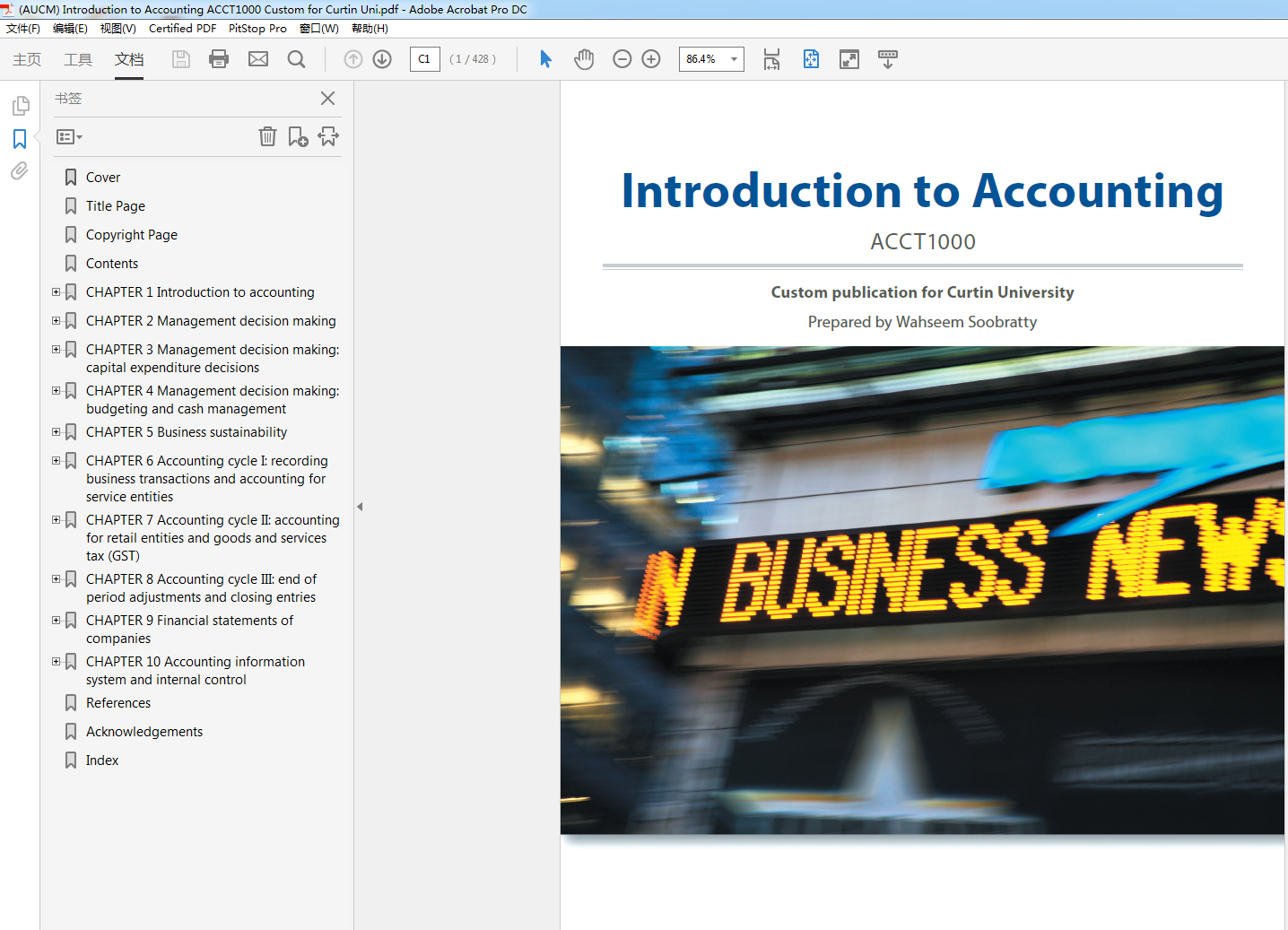
product details:
- ISBN-10 : 076197038X
- ISBN-13 : 978-0761970385
- Author: Pru Marriott (Author), J R Edwards (Author), Howard J Mellett (Author)
The fully revised and updated edition of this textbook provides an accessible introduction to accounting for students coming to the subject for the first time. It embraces the basic techniques and underlying theoretical concepts in accounting and shows how these are applied in various circumstances.
The text is fully illustrated with worked examples, and provides student activities and end of chapter questions, many of which have been taken from major accounting examination bodies. Solutions to all activities are given at the end of each chapter, and answers to the end of chapter questions are also supplied.
This new edition incorporates major changes which improve and update the previous edition. It can be easily used by students working on their own, as well as in a classroom environment.
Introduction to Accounting is an essential textbook for undergraduate accounting students. It is designed to meet the needs of both the non-specialist and those intending to specialise in accounting at undergraduate and also postgraduate levels. The instructors guide and solutions manual is available for instructors who recommend the book for course use.
table of contents:
PART 1: Theframework of accounting
1 Entities and financial reporting statements (including the natureand objectives of financial accounting)
2 Financial reporting: institutional framework and standards
3 The Conceptual Framework 1: objective of financial statements,stakeholders and other reports
4 The Conceptual Framework 2: concepts, principles and policies
5 The Conceptual Framework 3: the qualitative characteristics offinancial information
6 Auditing, corporate governance and ethics
PART 2: Double-entry bookkeeping (recording transactions and thebooks of account)
7 The accounting equation and its components
8 Basic documentation and books of account
9Double entry and the general ledger
10 The balancing of accounts and the trial balance
11 Day books and the journal
12 The cash book and petty cash book
PART 3: Preparing final financial statements for sole traders
13 The final financial statements of sole traders (introductory)
14 Adjustment for depreciation and non-current assets
15 Irrecoverable receivables and allowance for irrecoverablereceivables
16 Adjustment for accruals and prepayments
17 Inventory valuation
18 The extended trial balance and final financial statements(advanced)
PART 4: Internal control and check
19 The bank reconciliation statement
20 Control accounts
21 Errors and suspense accounts
22 Single entry and incomplete records
PART 5: Partnerships
23 The final financial statements of partnerships
24 Changes in partnerships
25 Partnership dissolution and conversion to a limited company
PART 6: Companies
26 The nature of limited companies and their capital
27 The final financial statements of limited companies
28 Statement of cash flows
29 The appraisal of company financial statements using ratio analysis
Appendix 1: Case studies
Appendix 2: Solutions to exercises
Glossary
Index
people also search:
You may also like…
Medicine - Anatomy and physiology
Medicine - Cardiology



